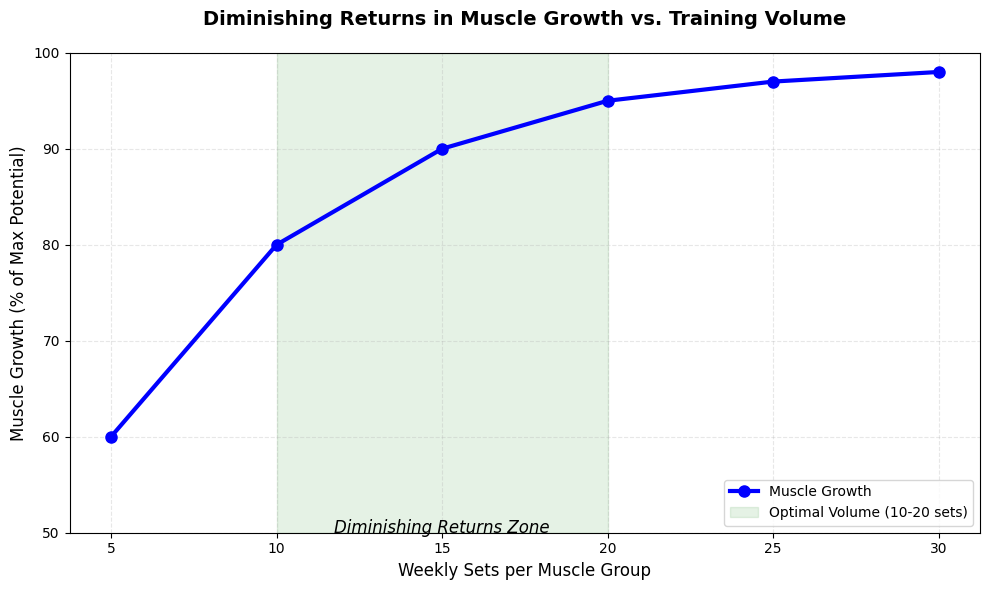The Ultimate Short Guide To Resistance Training
The Peter Attia Drive Podcast with Mike Israetel | May 13, 2015
Resistance training is one of the most powerful tools for transforming your body, enhancing longevity, and improving overall health. Yet, despite its well-documented benefits, many people struggle with inefficient routines, plateaus, or confusion about the best approach.
In a fascinating discussion between Dr. Peter Attia (a longevity expert) and Dr. Mike Israetel (a PhD in Sport Physiology and competitive bodybuilder), key insights were shared on how to train effectively—whether you’re a beginner or an advanced lifter. This deep dive explores the science of resistance training, debunks common myths, and provides actionable strategies to maximize results with minimal wasted effort.

Why Resistance Training Matters
Before diving into the specifics, it’s crucial to understand why resistance training is so valuable:
- Muscle Preservation & Longevity: Sarcopenia (age-related muscle loss) begins as early as your 30s. Resistance training combats this, keeping you stronger and more functional for decades.
- Metabolic Health: Muscle is metabolically active tissue, improving insulin sensitivity and fat loss.
- Bone Density: Weight-bearing exercises strengthen bones, reducing osteoporosis risk.
- Mental Resilience: Pushing through challenging workouts builds discipline and mental toughness.
Now, let’s break down the key lessons from Israetel and Attia’s conversation.
1. The Minimalist Approach: Two 30-Minute Workouts Per Week
One of the most surprising takeaways? You don’t need endless gym hours to see results.
Key Insights:
- Two 30-minute sessions per week can deliver significant benefits if structured properly.
- Focus on compound movements (squats, deadlifts, presses, rows) to maximize efficiency.
- Minimal rest between sets keeps workouts short but intense.
Why This Works:
- High-intensity, low-frequency training allows for full recovery while still stimulating muscle growth.
- Compound lifts engage multiple muscle groups, meaning you’re getting more “bang for your buck” per exercise.
Example Routine:
- Monday:
- Squats: 3 sets x 8-12 reps
- Bench Press: 3 sets x 8-12 reps
- Bent-Over Rows: 3 sets x 10-12 reps
- Thursday:
- Deadlifts: 3 sets x 5-8 reps
- Overhead Press: 3 sets x 8-10 reps
- Pull-Ups (or Lat Pulldowns): 3 sets x max reps
This approach ensures full-body stimulation with minimal time investment.
2. Compound vs. Isolation: What Really Builds Muscle?
Israetel strongly advocates for compound movements over isolation exercises for most people.
The Problem with Isolation Work:
- Time-inefficient: Training one muscle at a time (e.g., bicep curls) means longer workouts for the same results.
- Limited functional carryover: Real-world strength comes from multi-joint movements.
Best Compound Exercises:
- Squats (Quads, Glutes, Core)
- Deadlifts (Hamstrings, Back, Grip)
- Bench Press (Chest, Triceps, Shoulders)
- Pull-Ups/Rows (Back, Biceps)
- Overhead Press (Shoulders, Triceps)
Exception: If you have a specific weak point (e.g., small arms), adding 1-2 isolation exercises (curls, triceps extensions) can help.
3. Training to Failure: Necessary or Overrated?
Many lifters believe they must grind out every set to failure for growth. But research—and Israetel—disagree.
The Science:
· Stopping 1-2 reps short of failure delivers ~90% of the hypertrophy stimulus with far less fatigue.
· True failure should be used sparingly (e.g., once every few weeks) due to its high recovery cost.
Practical Application:
· For most sets, leave 1-2 reps “in the tank.”
· Only push to failure on the last set of an exercise (if at all)
4. Volume vs. Intensity: Finding the Sweet Spot
A major point of confusion is how much volume (sets per week) is optimal.
The Diminishing Returns of Volume:
· 1 set per muscle group per week → ~30% of max growth potential.
· 3 sets → ~70-80%.
· 5+ sets → Minimal additional gains.
Recommended Weekly Volume (Per Muscle Group):
Experience Level | Sets Per Week |
Beginner | 10-15 |
Intermediate | 15-20 |
Advanced | 20-30 |

Key Insight: More isn’t always better. Progressive overload (adding weight/reps over time) matters more than sheer volume.
5. Supersetting for Efficiency & Cardio Benefits
One of the best ways to cut workout time in half while boosting conditioning is pairing unrelated exercises.
How It Works:
· Perform Exercise A (e.g., squats), then immediately Exercise B (e.g., bench press) with minimal rest.
· While you work one muscle group, the other recovers.
Example Superset Pairings:
1. Squats + Bench Press
2. Deadlifts + Pull-Ups
3. Rows + Overhead Press
Bonus: This method elevates heart rate, blending strength and cardio benefits.
6. The Role of the Nervous System in Recovery
Many lifters overlook neural fatigue, which can hinder performance.
How Lifting Affects Your Nerves:
- Heavy lifting depletes neurotransmitters (like acetylcholine) needed for muscle contractions.
- Peripheral nervous system fatigue (local to the muscles worked) requires 48-72 hours to recover.
Signs You’re Overreaching:
- Strength drops suddenly
- Excessive soreness lasting >3 days
- Poor sleep or mood swings
Solution: De-load every 4-6 weeks (reduce volume/intensity by ~50%).
7. Common Mistakes & How to Fix Them
Mistake #1: Skipping Progressive Overload
· Fix: Track workouts and add weight/reps weekly.
Mistake #2: Poor Exercise Selection
· Fix: Prioritize compound lifts before isolation work.
Mistake #3: Inconsistent Routine
· Fix: Stick to a plan for at least 8-12 weeks before changing.
8. Nutrition & Recovery: The Unsung Heroes
Training is only half the battle — recovery and nutrition dictate results.
Key Recovery Strategies:
· Sleep 7-9 hours/night (critical for muscle repair).
· Eat 1.6-2.2g protein/kg body weight daily.
· Manage stress (cortisol inhibits muscle growth).
9. The Truth About Frequency: How Often Should You Train?
A hotly debated topic is training frequency — how many times per week should you hit each muscle group?
Research-Backed Recommendations:
- Beginners: 2-3x per week (full-body workouts)
- Intermediate:3-4x (upper/lower splits)
- Advanced: 4-6x (body part specialization)
Why Higher Frequency Helps:
- More frequent training enhances motor learning (better technique).
- It allows for higher weekly volume without crushing fatigue in one session.
Example Split for Intermediate Lifters:
- Monday: Upper Body
- Wednesday: Lower Body
- Friday: Upper Body
- Saturday: Lower Body
This balances volume and recovery effectively.
10. The Mind-Muscle Connection: Does It Matter?
Some lifters swear by “feeling the muscle work,” while others prioritize moving heavy weight.
What Science Says:
· For beginners, focusing on proper form is more important than “feeling the burn.”
· For advanced lifters, intentional muscle activation can help target lagging areas.
How to Improve Mind-Muscle Connection:
· Slow eccentrics (3-4 sec lowering phase)
· Pauses at peak contraction (e.g., squeeze at top of bicep curl)
· Lighter weights with perfect form (occasionally)
11. Cardio & Resistance Training: Friends or Foes?
Many fear cardio will “kill gains,” but the truth is more nuanced.
The Interference Effect (Myth vs. Reality):
- Long, slow cardio (e.g., 60+ min jogging) can interfere with hypertrophy if done excessively.
- Short, intense cardio (e.g., 20 min HIIT) has minimal impact and may even enhance recovery by improving circulation.
Smart Cardio Strategies for Lifters:
- Do cardio on non-lifting days (or 6+ hours apart).
- Prioritize low-impact options (cycling, swimming) to reduce joint stress.
- Keep sessions under 30 min. if muscle growth is the priority.
12. Age & Resistance Training: It’s Never Too Late
A common misconception is that older adults shouldn’t lift heavy. The opposite is true.
Benefits for Older Lifters:
- Preserves independence by maintaining strength for daily tasks.
- Reduces fall risk by improving balance and coordination.
- Boosts cognitive function through increased blood flow.
Adjustments for Older Lifters:
- Higher reps (10-15) with moderate weights.
- More warm-up sets to prepare joints.
- Emphasize form over ego lifting.
13. The Role of Genetics in Muscle Growth
While training and nutrition are crucial, genetics play a significant role in how easily you build muscle.
Genetic Factors Affecting Growth:
- Muscle Fiber Type: Fast-twitch fibers grow more easily than slow-twitch.
- Testosterone Levels: Higher natural testosterone supports muscle growth.
- Bone Structure: Leverages affect lifting mechanics.
What You Can Control:
- Optimize training for your body type.
- Eat enough protein to support growth.
- Stay consistent — even “hard gainers” can build muscle.
14. Women & Resistance Training: Busting Myths
Many women avoid lifting weights due to fear of “bulking up.”
The Reality:
- Women have less testosterone than men, making extreme muscle growth unlikely without steroids.
- Resistance training tones and strengthens without excessive size.
- It boosts metabolism more than cardio alone.
Best Approaches for Women:
- Moderate weights (8-15 reps)
- Full-body routines 3x/week
- Progressive overload (just like men)
15. Tracking Progress: Beyond the Scale
Muscle gain isn’t always reflected in weight changes.
Better Metrics to Track:
- Strength increases (heavier weights over time)
- Body measurements (tape measure)
- Progress photos (visual changes)
- Performance (more reps, better endurance)
Why the Scale Lies:
- Muscle is denser than fat, so you may look leaner at the same weight.
- Water retention fluctuates daily.
Final Thoughts: Less Can Be More
Resistance training doesn’t require marathon gym sessions — just smart, intense effort. Whether you’re lifting twice a week or five times, the principles remain the same:
- Focus on compound lifts
- Train close to (but not at) failure
- Progressively overload
- Recover like a pro
By applying these science-backed strategies, you’ll build strength, muscle, and longevity without wasting time.
What’s your biggest challenge with resistance training? Share below!
Related Posts



